
|
 |
 |
 |
 |
 |
| Author |
Message |
    
Robert Charles Linford
Assistant Commissioner
Username: Robert
Post Number: 3094
Registered: 3-2003
| | Posted on Saturday, September 25, 2004 - 6:04 am: | 





|
Hi all
I thought I'd post some "Times" info on the Tuke family.
Dec 26th 1883
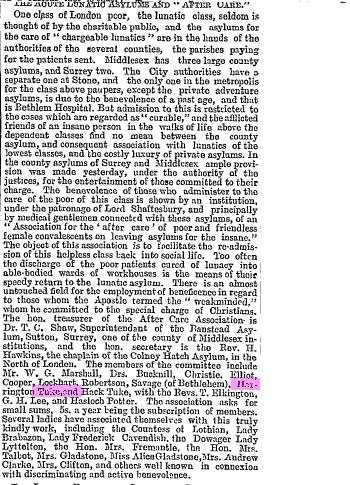
July 3rd 1888
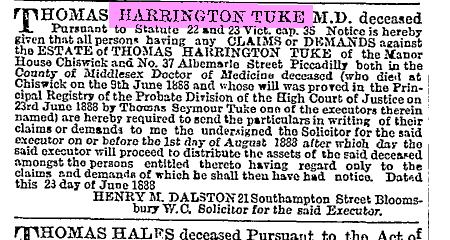
Jan 15 1896
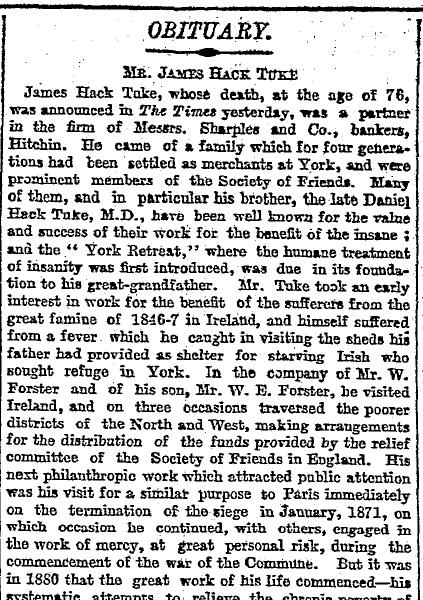
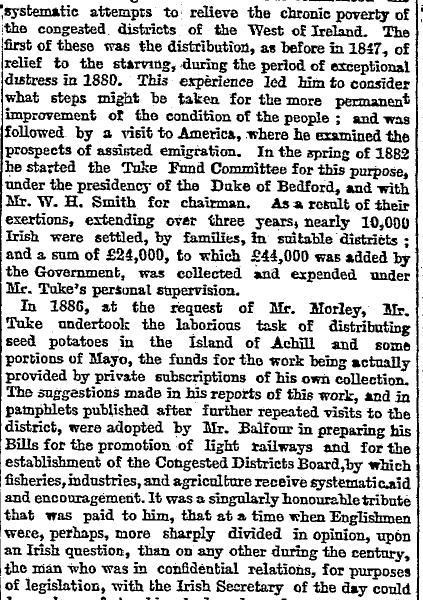
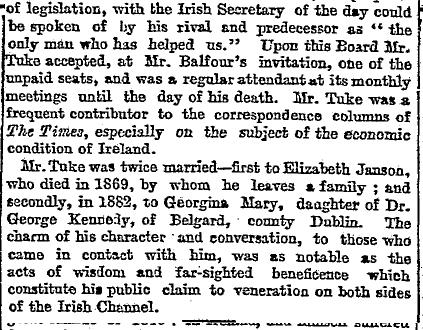
AUG 25th 1955
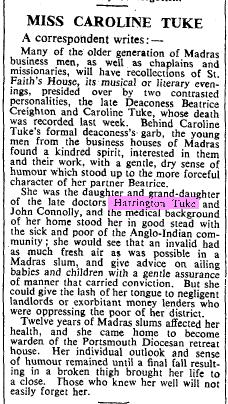
The following is meant as pure speculation only.
We have a George Druitt and a James Hack Tuke involved in the emigration movement. Perhaps Monty knew neither of these men. However, he was said to have gone abroad. Is this what he originally intended?
Dr Harrington Tuke seems to have died in the middle of 88. What if Monty was being treated by Dr Harrington Tuke? Could the loss of his doctor have accelerated a mental decline - or even started him on a killing spree?
Just speculation.
Robert |
    
CB
Unregistered guest
| | Posted on Wednesday, November 03, 2004 - 6:27 pm: | 





|
Hi Robert,
Macnaughton Identified the ripper as being involved with a leader of a plot to assasinate Mr. Balfour. Knowing that Macnaughton's believed that Druitt was the ripper. I can only assume he was claiming that Druitt was involved with the leader of the plot. Could Dr.Tuke have been Druitts connection to Balfour or the people who were involved in the assasination plot?
Your Friend,CB |
    
CB
Unregistered guest
| | Posted on Wednesday, November 03, 2004 - 4:30 pm: | 





|
Hi Robert,
Interesting, Do you think that Druitt could have been involved with an assasination attempt against mr. Balfour? Could he have assosiated with people that were involved?
Your friend,CB |
    
Robert Charles Linford
Assistant Commissioner
Username: Robert
Post Number: 3367
Registered: 3-2003
| | Posted on Thursday, November 04, 2004 - 5:27 am: | 





|
Hi CB
Well, I'm not aware of any radical sympathies Druitt might have had. He seems to me to have been a "safe" member of the Establishment.
But then, the British Establishment has a history of producing "safe" members who turn out to be not very safe at all - so who knows?
Robert |
    
Christopher T George
Assistant Commissioner
Username: Chrisg
Post Number: 1037
Registered: 2-2003
| | Posted on Thursday, November 04, 2004 - 12:19 pm: | 





|
Hi all
From "Chiswick Manors" on British History Online:
"Eighteenth-century lessees of the Prebend manor apparently sublet the house, which c. 1786–1810 was a school under the Revd. Thomas Horne and by 1849 an asylum under Dr. Thomas Harrington Tuke. The building was two-storeyed and of red brick with stone dressings, with dormers in a high slate roof; the main garden front had nine bays c. 1850, when there was also an extension. Panelling was bought by the art-dealer Joseph Duveen in 1896, when the asylum moved to Chiswick House under Dr. Thomas Seymour Tuke and Manor Farm House made way for Balfern Grove and neighbouring roads."
I think the following image is one of the lions that sat in front of the asylum when the Tuke family moved it to Chiswick House:
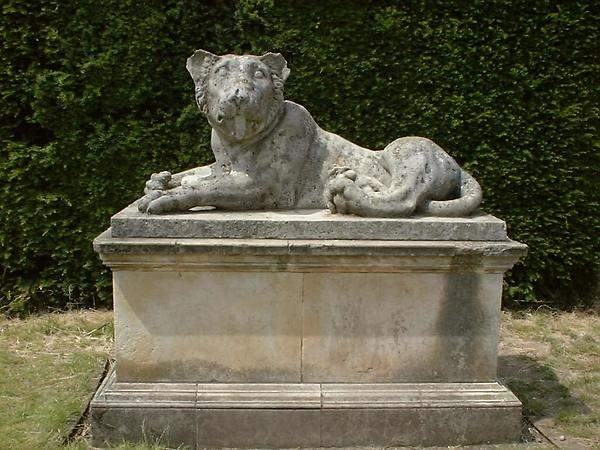
See Lions roar again at the entrance to Chiswick House Grounds
Also see http://www.bulbeckfoundry.co.uk/lions.htm
Christopher T. George
North American Editor
Ripperologist
http://www.ripperologist.info
|
    
Christopher T George
Assistant Commissioner
Username: Chrisg
Post Number: 1041
Registered: 2-2003
| | Posted on Thursday, November 04, 2004 - 2:52 pm: | 





|
Hi all
I wonder if painter Henry Scott Tuke (1858-1929), famous for painting portraits of nude boys, also fitted into the picture anywhere? He came from the same family who ran asylums in York and London. An acquaintance perhaps of Montague John Druitt through possible mutual interests either in London or in the West Country?
I do know that Tuke painted a portrait of cricketer W.G. Grace ("W.G. Grace wearing Ranji's Turban") so perhaps they might have met through mutual cricketing circles if not other circumstances. A scorecard from 1890 indicates that W. G. Grace and C. M. Tuke played for the Gentlemen of England versus I Zingari at North Marine Road Ground, Scarborough on 28-30 August 1890 (3-day match). This was Charles Molesworth Tuke, born 23rd May 1857, Chiswick, died 24th January 1925, Chiswick. A couple of other Tukes appear in the on-line period cricketing archives as well.
The following write-up on the artist is derived from
"Henry Scott Tuke" at Wikipedia. The site also contains examples of Tuke's artwork.
Henry Scott Tuke (12 June 1858 - 13 March 1929), British painter, is best remembered for his paintings of naked boys, which have earned him the status of a pioneer of gay male culture.
Tuke was born in York into a prominent family of Quakers. His father Daniel Hack Tuke was a prominent campaigner for more humane treatment of the insane. His great-grandfather William Tuke had founded the Retreat at York, one of the first modern insane asylums, in 1792. His grandfather Samuel Tuke and his brother James Hack Tuke were also well-known social activists.
In 1874 Tuke moved with his family to London, where he enrolled in the Slade School of Art. After graduating he traveled to Italy in 1880, and from 1881 to 1883 he lived in Paris, where he studied with the French history painter Paul Laurens and met the American painter John Singer Sargent (who was also a painter of male nudes, although this fact was little known in his lifetime).
During the 1880s Tuke also met Oscar Wilde and other prominent poets and writers, most of them homosexuals (then usually called Uranian) who celebrated the adolescent male. He wrote a "sonnet to youth" which was published anonymously in The Artist, and also contributed an essay to The Studio.
Tuke returned to Britain and moved to Newlyn, joining a small colony of artists including T. C. Gotch, who became a lifelong friend, and Walter Langley. These painters are known to art historians as the Newlyn School.
In 1885 Tuke settled in Falmouth, a fishing port in Cornwall, then still a remote and romantically rustic part of the country. He bought a fishing boat for 40 pounds and converted it into a floating studio and living quarters. Here could indulge his passion for painting boys in privacy. Most of his works depict boys and young men who swim, dive, and lounge, usually naked, on a boat or on the beach.
(Message edited by chrisg on November 04, 2004)
Christopher T. George
North American Editor
Ripperologist
http://www.ripperologist.info
|
    
Robert Charles Linford
Assistant Commissioner
Username: Robert
Post Number: 3372
Registered: 3-2003
| | Posted on Thursday, November 04, 2004 - 4:15 pm: | 





|
Hi Chris
Thanks for all that interesting info. I think the CM Tuke who played cricket may have been the Charles M Tuke living at Chiswick in 1891, with wife, two daughters, father-and-mother-in-law, and several servants. He was then aged 35. Chris, I cannot make out his occupation. What does it look like to you?
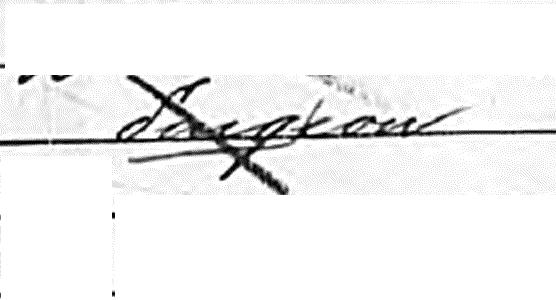
PS I see a Mordaunt took part in the cricket match.
Robert |
    
Robert Charles Linford
Assistant Commissioner
Username: Robert
Post Number: 3375
Registered: 3-2003
| | Posted on Thursday, November 04, 2004 - 5:41 pm: | 





|
Chris, I'll answer ny own question : it's "Surgeon" isn't it?
I was smoking in the garden when it suddenly came to me.
Back to my cuppa.
Robert |
    
Christopher T George
Assistant Commissioner
Username: Chrisg
Post Number: 1042
Registered: 2-2003
| | Posted on Thursday, November 04, 2004 - 6:26 pm: | 





|
Hi Robert
Indeed, the word does look like "surgeon" so I think you are correct. Interesting the connections between the Druitts, a family of doctors, and the Tukes, another family of doctors.
Again from the Chiswick site referenced above it states that Dr. Charles Molesworth Tuke lived at Chiswick House until his death in 1925. He was the brother of Dr. Seymour Tuke (died 1917) who first leased the house for use as an asylum.
One other aside, you realise do you that the "Bethlem Hospital" referred to in the news cutting about asylums for the acutely insane you kindly posted from The Times of 26 December 1883 is the origin of the term "bedlam"? Specifically, as cited on one website--
'The Bethlem Royal Hospital, (which has been variously known as Bethlem Hospital, Bethlehem Hospital and Bedlam) is the world's oldest psychiatric hospital. It has been a part of London since 1247, first as a priory for the sisters and brethren of the order of the Star of Bethlehem. Its first site was in Bishopsgate Street (where Liverpool Street station now stands). In 1330 it is mentioned as a hospital, and it is documented that in 1403 some of the first lunatics were there. In 1547 Bedlam was handed over by Henry VIII with all its revenues to the city of London as a hospital for lunatics. It became famous and afterwards infamous for the brutal ill-treatment meted out to the insane. In 1675 Bedlam moved to new buildings in Moorfields, outside the City boundary. In the 18th century people used to go there to see the lunatics. For a penny one could peer into their cells, view the freaks of the "show of Bethlehem" and laugh at their antics. The lunatics were first called "patients" in 1700, and "curable" and "incurable" wards were opened in 1725-34. In 1815, Bedlam was moved to St George's Fields, Lambeth (into buildings now used to house the Imperial War Museum). Finally, in 1930, the hospital was moved to an outer suburb of London, Eden Park near Beckenham, Kent.'
All the best
Chris
Christopher T. George
North American Editor
Ripperologist
http://www.ripperologist.info
|
    
Robert Charles Linford
Assistant Commissioner
Username: Robert
Post Number: 3377
Registered: 3-2003
| | Posted on Thursday, November 04, 2004 - 7:07 pm: | 





|
Hi Chris
Yes, I'm just looking at "The Greatest Benefit To Mankind" by Roy Porter. He contrasts the approach of the early Tukes with conditions at Bethlem. A parliamentary committee was told how one patient was treated :
"A stout iron ring was riveted round his neck, from which a short chain passed through a ring made to slide upwards and downwards on an upright massive iron bar, more than six feet high, inserted into the wall. Round his body a strong iron bar about two inches wide was riveted ; on each side of the bar was a circular projection ; which being fashioned to and enclosing each of his arms, pinioned them close to his sides.
Bethlem's physician, Thomas Monro(1759-1833), somewhat lamely reassured the committee that chains and fetters were 'fit only for the pauper lunatics : if a gentleman were put in irons he would not like it.'"
Of course, we've now outgrown lunatic freak shows - we have Jerry Springer. 
Robert |
    
David Andersen
Detective Sergeant
Username: Davida
Post Number: 78
Registered: 3-2003
| | Posted on Friday, July 01, 2005 - 2:55 pm: | 





|
There were two unrelated Tuke families. Interestingly both families were in the asylum business. The cuttings above do not relate to the Chiswick Tukes.
The sons of Harrington-Tuke took over the Manor House asylum from him. Harriet Mordaunt had been a patient at the Manor House. The three Tuke brothers, two were surgeons, all played cricket and were exact contemporaries of MJD at Oxford.
My contention has always been that MJD spent his final days at the asylum.
all of the Tuke brothers lived in Chiswick and one was a close neighbour of James Monro who died in Chiswick in 1924. Look to the Tukes for the private information. And ask why they were chosen to care for Anne Druitt.
Regards
David
|
    
Natalie Severn
Assistant Commissioner
Username: Severn
Post Number: 2135
Registered: 11-2003
| | Posted on Friday, July 01, 2005 - 3:36 pm: | 





|
I cant imagine James Monro would have considered Druitt to have been a "political hot potato" -can you David?
I have always had a sense that Monro knew something important regarding the ripper.I may be wrong but Druitt doesnt fit in this particular
comment of Monro"s .
Natalie |
    
David Andersen
Detective Sergeant
Username: Davida
Post Number: 80
Registered: 3-2003
| | Posted on Tuesday, July 05, 2005 - 6:51 am: | 





|
Are you sure that Monro used the word 'political'?
Regards
David
|
    
Natalie Severn
Assistant Commissioner
Username: Severn
Post Number: 2152
Registered: 11-2003
| | Posted on Tuesday, July 05, 2005 - 11:34 am: | 





|
David see page 374 Sugden"s Complete History...
he quotes him as saying...."A real hot potato"---not as I said "a political hot potato"----dont know where I got the political from-possibly from one of Phil Hill"s posts.
Best Natalie |
    
ana squire
Unregistered guest
| | Posted on Saturday, October 15, 2005 - 9:45 pm: | 





|
I am interested in Charles Molesworth Tuke as he married into my Wylde family. Any other information such as what happened to his children would be gre3at. Ana Squire. pjars@orcon.net.nz |
|
Use of these
message boards implies agreement and consent to our Terms of Use.
The views expressed here in no way reflect the views of the owners and
operators of Casebook: Jack the Ripper.
Our old message board content (45,000+ messages) is no longer available online, but a complete archive
is available on the Casebook At Home Edition, for 19.99 (US) plus shipping.
The "At Home" Edition works just like the real web site, but with absolutely no advertisements.
You can browse it anywhere - in the car, on the plane, on your front porch - without ever needing to hook up to
an internet connection. Click here to buy the Casebook At Home Edition.

|
 |
 |
|








